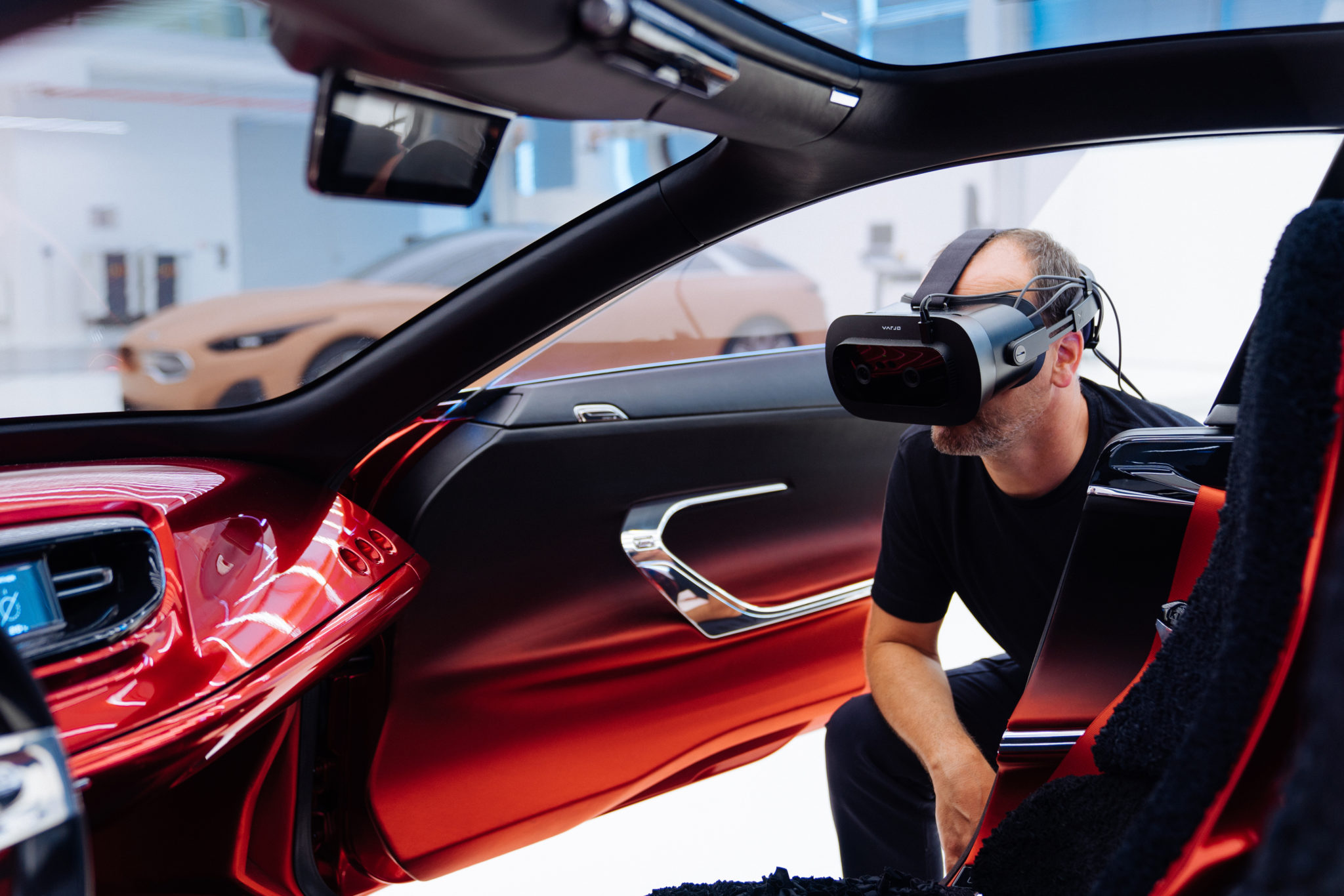In Augmented Reality, Virtual Reality and Mixed Reality News
September 23, 2020 – Varjo, a provider of industrial-grade virtual reality/extended reality (VR/XR) headsets, has today released a case study outlining how Kia Motors is implementing Varjo’s technology in its design process. Using the Varjo XR-1 headset supported by Autodesk VRED, Kia’s visualization process has been able to move to a totally immersive photorealistic environment, allowing global design reviews to go from taking days to taking an hour to do.
When Kia’s European team tried out Varjo’s VR headset for the first time, they were blown away by the clarity and the resolution compared to all other headsets, according to Varjo. Commenting on the hardware, Thomas Unterluggauer, Creative Manager, CGI at Kia Motors’ Europe Design Center, said: “For the first time, we could literally see the metallic flakes in the paint and perceive the depth and quality of the material shaders. We could see the beauty of the details more than ever before in the virtual world. Varjo is the only device capable of this level of clarity and sharpness.”
Varjo’s XR-1 mixed reality device is capable of much more than just providing high resolution image quality though. With Varjo XR-1, designers are able to work with colleagues in a physical design space and collaborate on photorealistic, real-scale virtual car models while seeing their hands and bodies. Immersive mixed reality experiences allow them to talk as they go, give immediate feedback, and run more engaging reviews, Varjo states. The below video, shot through the Varjo XR-1 Developer Edition, demonstrates this.
“Immersive collaboration works way more naturally than we expected. This is something I’ve always wished for and with the Varjo device, it’s now a reality,” stated Gregory Guillaume, Vice President of Design at Kia Motors Europe.
Unterluggauer added: “It’s fascinating how quickly you adapt to the mixed reality. You’re tricked into thinking for a moment that reality is wrong, that there is something missing. It’s completely different to any other experience I’ve ever had in VR,”
Located in Frankfurt, Germany, Kia’s Europe Design Center is helping to change perceptions of the Kia brand across the continent as well as worldwide. Its dedicated team of designers create concept cars of the future as well as production models for both Europe and the global market.
Until recently, the automotive design process relied a lot on 2D reviews on screens and powerwalls, followed by physical clay models and prototypes to further refine and develop the surfaces. However, according to the manager of the studio’s digital department, Frank Hübbe, 2D models lack volume. “Although you can use keyboard, mouse, and screen to work efficiently in 2D, you’ll never get a fully realistic impression of the car,” he said.

According to Varjo, today, Kia Europe’s designers are complementing their entire workflow with virtual and mixed reality. Teams are using VR/XR technologies to make visualization work more effective and showcase projects in new ways. For example, designers are now able to review a virtual model directly against a physical model in the same room, or even augment an existing clay model with virtual details.
“With VRED and the Varjo XR-1, you have the context of the real world and the flexibility of the virtual world,” Hübbe said.
“Before, reviewing a car model with design management meant flying to Korea and took at least four days. Now, I can do it in one hour.”
Gregory Guillaume, Vice President of Design at Kia Motors Europe
With COVID-19 currently preventing most business travel, Kia Europe has turned to Varjo’s VR/XR and Autodesk VRED’s virtual collaboration feature to continue working with the other global studios. Varjo’s technology is enabling designers at Kia to work in ways that haven’t been possible before by allowing them to collaborate in real-time on the same photorealistic models with teams across the globe.
Previously, according to Guillaume, to discuss and review a model with the design management at Kia’s global headquarters, it would involve flying to Korea and would take a minimum of four days. With XR, it can be done in one hour, presenting Kia with the ability to carry out design reviews virtually and creating an opportunity to save vast amounts of time, work and money.
Varjo XR-1 is the first mixed reality device supported by Autodesk VRED, according to the company. For the full case study, please visit Varjo’s website.
Image / video credit: Varjo / Autodesk VRED / KIA Motors / Vimeo
About the author
Sam is the Founder and Managing Editor of Auganix. With a background in research and report writing, he has been covering XR industry news for the past seven years.
